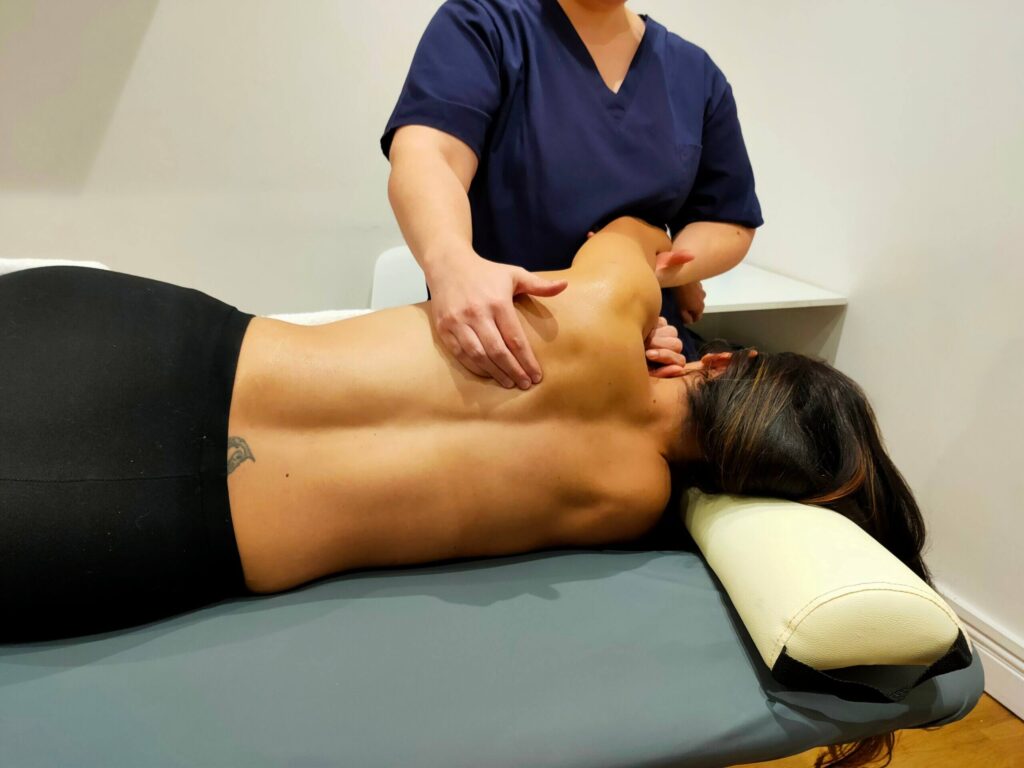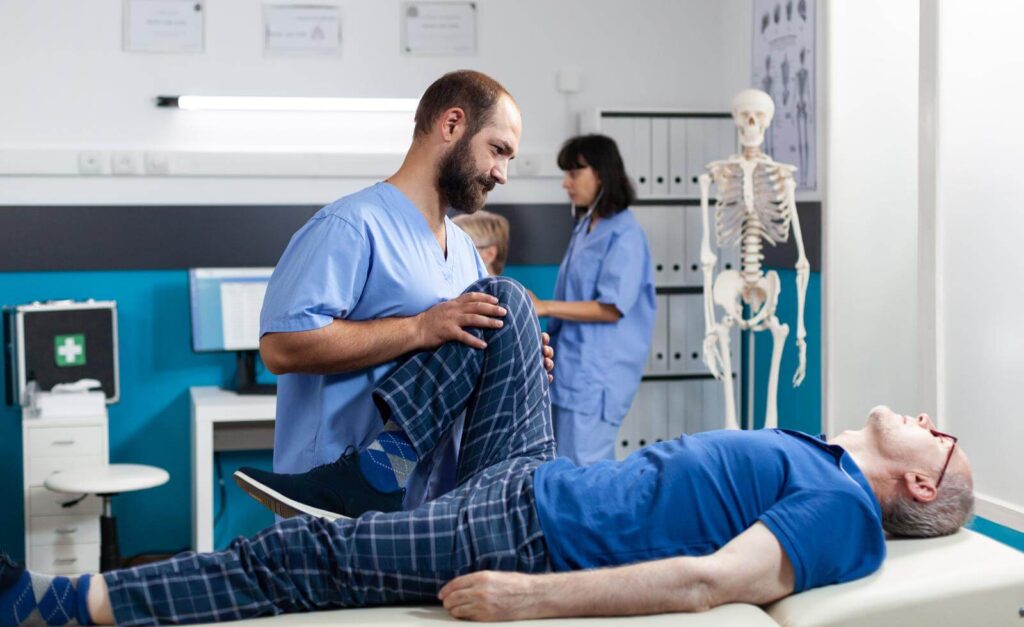
Osteopathy, a holistic approach to healthcare, has become increasingly popular in the UK, with a primary focus on the role of the musculoskeletal system in overall health. While its integration with the National Health Service (NHS) is not common, where available, it is proven to be beneficial to patients.
Osteopathy is a regulated profession in the UK, much like dentistry or your GP, and is becoming more widely recognised within the medical profession rather than considered an alternative or complementary healthcare solution.
The NHS primarily offers conventional medical treatments but recognises the value of treatments like Osteopathy, especially in managing conditions related to pain and musculoskeletal issues. Some NHS services even provide osteopathic treatments, broadening the range of patient care options.
This collaboration aims to offer a more diverse set of holistic care choices, acknowledging the variety within healthcare.
What Is Osteopathy?
Put simply, osteopathy is a versatile tool in the world of healthcare.
It’s not just about fixing what’s broken; it’s about treating you as a whole, with osteopaths believing that the body has an inherent ability to heal itself when a person receives the right intervention.
Osteopaths use a variety of hands-on techniques, including but not restricted to Osteopathic Manipulative Treatment (OMT), along with rehabilitation and advice. Osteopaths add value with the time spent with you on a thorough consultation and examinations. These can include Osteopathic and Orthopaedic examinations and systemwide testing, for example, Cardiovascular and Neurological screening. Therefore, we can ensure it is safe to treat, and if we at Arc Osteopathy identify any concerns, we can refer you back to your GP.
What’s fascinating is that Osteopaths view your body as a connected system, much like the gears in a well-functioning machine. If one part is out of sync, it can disrupt the entire system.
So, we focus on improving the structure and function of the individual to ensure everything runs smoothly. Osteopaths handle everyday problems like back and other joint pain, sports injuries, and digestive concerns. It’s like a comprehensive health solution.
The History of Osteopathy in the UK
In 1913, the UK embraced osteopathy when John Martin Littlejohn, a Dr. Andrew Taylor Still student, brought this approach to London after his studies.
He was passionate about hands-on techniques and even established Europe’s first osteopathy school, setting a trend in motion. The origins of osteopathy trace back to the United States around 1872 when Dr. Still proposed a different approach to healthcare.
Eventually, it found its way to the UK. By 1917, the UK had its osteopathy college, marking a significant milestone. Despite its growth and recognition, osteopathy isn’t a prominent part of the NHS in the UK.
Nevertheless, regulated osteopaths can be found nationwide, offering another option for people looking to optimise their well-being.

Osteopathy and the NHS: The Current Scenario
Curious about how osteopathy and the NHS work together hands? Let’s break it down.
Not all local NHS authorities offer osteopathy, but some do. Also, the availability is different everywhere. Think of it as a treasure hunt, with some local healthcare trusts having more osteopathic resources than others.
Some NHS trusts employ Osteopaths alongside Physiotherapists as part of their musculoskeletal team and others as part of spinal care teams, but in most instances, Osteopaths work privately.
Therefore, it’s not something you can ask every doctor for on the NHS. Your GP must refer you to a musculoskeletal team, where an osteopath or physiotherapist could see you.
If you visit your GP with muscle or joint pain, they may recommend that you see an osteopath privately. However, if you don’t want to wait weeks on end with any musculoskeletal issues, you can self-refer to an Osteopath without seeing your doctor.
If you’re lucky enough to live in South London or Surrey and you’re eyeing some hands-on TLC, check out our Osteopaths in Croydon. While we don’t provide NHS osteopathy, we do have good relationships with local GPs.
Come and visit us so we can make you comfy and keep that body smiling!

10 Benefits of Osteopathy Recognised by the NHS
Alright, let’s dive into the world of osteopathy! In the UK, it’s like a hidden gem in healthcare, and the NHS gives it a thumbs-up for some good reasons.
- Cost-Effective Choices
By introducing osteopathy into the NHS, there’s potential to save money. It’s like choosing a more affordable yet equally effective treatment option.
- Reduced Hospital Stays
Effective osteopathic treatments can mean a quicker recovery from some operations with both pre-abilitation and rehabilitation treatments. This is both convenient and cost-saving.
- Saving on Medications
If osteopathic care reduces the need for certain medications, e.g. pain and muscle relaxant medication, that’s a direct saving for many of us.
- Job Opportunities
With osteopathy gaining recognition in the NHS, there could be more job openings for professionals in this field.
- Supporting Local Clinics
With more awareness and acceptance, local osteopathic clinics might see increased visits, benefiting local businesses.
- Educational Growth
The recognition of osteopathy might lead to more people considering it as a study option, benefiting educational institutions offering these courses.
- Preventative Care
Addressing health issues early with osteopathy could prevent more severe problems later on. It’s about taking proactive steps for our health.
- Improved Work Attendance
Feeling better thanks to osteopathy could mean fewer days off work due to illness, benefiting both employees and employers.
- Increased collaboration with the NHS
Your Osteopath can write or refer you back to your GP if they cannot help you or privately refer you directly for some investigations, including MRI scans.
- Research and Development
The increased focus on osteopathy could lead to more research in the field, paving the way for new and improved treatment methods.
The Future: Osteopathy’s Growing Role in Public Health
Here’s the scoop on the future of osteopathy in public health: Researchers are revving up their engines, diving into studies and pilot programs to explore how osteopathy can play a more prominent role in keeping us all tip-top.
Hopefully, we shall see more and more integration of osteopathy across UK healthcare. Think of it as your trusted sidekick in the quest for good health, working hand in hand with conventional medicine.

The Current Reality of How to Access Osteopathic Services through the NHS
It is most likely that at the moment, you will need to see an Osteopath privately, as coverage can vary depending on your location and the specific NHS trust in your area.
So, if you’re experiencing those aches and pains, don’t hesitate to contact your Osteopath directly.
If you would prefer to go down the NHS route, contact your GP and explore potential osteopathic options available through the NHS. Your well-being is worth it, but be warned, the options may be limited!
To see an Osteopath on the NHS, you’ll typically need a referral from your GP (General Practitioner) to gain access. Start by booking an appointment with your GP and discussing your condition or symptoms and see if it is possible to get a referral. You will likely be referred to a musculoskeletal team or pain clinic, though they may recommend that you see an Osteopath privately.
If you can find an osteopath on the NHS, in some cases, NHS-funded osteopathy services may be free. However, If you wish to skip the waiting times associated with the NHS for the initial GP visit (and this is often upwards of 2 weeks) and the referral from them, which can take months, then you can self-refer to see an Osteopath privately such as your local Croydon Osteopaths at Arc Osteopathy, who will typically be able to see you within 48 hours.
Conclusion
The partnership between osteopathy and the NHS in the UK is growing, albeit slowly, leading to a significant step towards promoting holistic healthcare. Osteopathy is regulated and a primary treatment; it’s not an alternative or complementary solution.
Osteopathy offers a versatile and science-backed approach to healthcare, focusing on the body’s interconnectedness. While availability is still limited, accessing osteopathic services through the NHS is becoming easier.
So, if you’re seeking effective and accessible healthcare options, consider exploring osteopathy directly or talking through it with your GP. In rare instances, Osteopathy may be covered by the NHS; you’re lucky to be referred to a Musculoskeletal clinic, which employs an Osteopath, but for the majority of cases, you’ll most likely need to take the direct route, self-refer and pay privately or through your insurance.
It’s worth thinking about; after all, your well-being is worth the journey!
